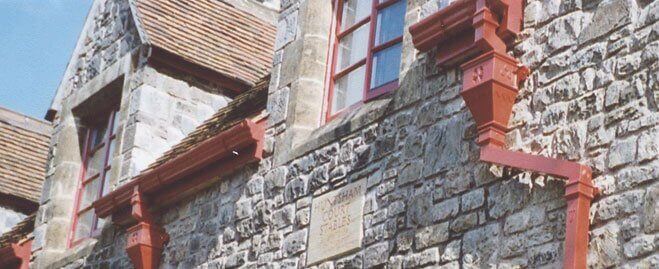Top Tips For Purchasing Cast Iron Gutters

So, you are considering replacing your existing gutters with new cast iron guttering. You’ve done your initial research, you know it’s a lot more expensive than modern PVC gutters but hey – it will look superb on your property with its traditional style and period feel, and once it’s up it will last forever!
The fact is, many people all over the UK fit cast iron gutters to their houses, either to replace an old, worn out system that was fitted long before they were born or to complement a more traditional style of new build property. Here at Gutter Supplies we supply cast iron rainwater systems all over the UK for use on many different types of buildings, from ancient churches to small Victorian terraces to grandiose listed properties. And it’s true – correctly maintained cast iron gutters will last a lifetime, so if you have the budget to spend it’s a very wise investment. From our experience of the type of questions we often get asked, we think the following facts about cast iron will help you make up your mind.
Colour
There are basically two options here. You can buy either the pre-finished black, which has four coats of paint already applied at the factory, or you can get it in a primed finish to paint yourself - any colour you like. Black is the most popular choice because it looks traditional, but if you want a truly bespoke solution then go for the primed option and paint it yourself. The primer is only a transit coat to protect the product at the warehouse and en-route, so if you decide to paint it you’ll need to prime, undercoat and gloss it. If you’ve got a specific colour scheme in mind though that’s definitely your best option.
Shape
Not too much choice here, but if it was good enough for the Victorians it’s good enough for us! You can have Half Round, which is what it sounds like –a semi circular gutter, Beaded Half Round with a decorative lip, Deepflow, Box Section or choose from three styles of Ogee which is a shaped gutter that isn’t symmetrical, it has a flat back and a contoured front edge which looks quite decorative. As Ogee is not symmetrical you need to be aware that fittings such as stop ends are handed either left or right, and angles are either internal or external. It sounds more confusing than it really is, it is easy to understand when you look at the pictures on our website. The rainwater downpipes are always round (for both systems), with large, decorative moulded clips and fittings.
Size
Every Cast Iron system that we offer is available in different size options, varying from 100mm right up to 150mm. Generally 115mm and 125mm are the most popular sizes for domestic installations. You can have downpipes in either 65mm or 75mm diameter – we sell roughly the same amount of each, so it’s purely down to choice. Those customers that buy the larger downpipe have usually chosen the 125mm gutter option. If you need a larger gutter system for a really big or steep roof we recommend the Deepflow system or the 150mm Half Round option.
Installation
Be warned – cast iron gutter is heavy. It comes in 1.83m lengths (6ft in old money!) and it takes a bit of lifting. Fitting this type of guttering is a two man job, working off of scaffold. Cast Iron is simply too heavy to work with on your own or off of a ladder. You can download full installation instructions from our website, fitting this gutter is actually not that much different from fitting plastic; it’s just a little bit more awkward to manoeuvre. If you are worried about how strong your fascia board is and whether it will take the weight of the gutter there are other options – we supply rafter brackets which are long metal arms that screw to either the top or the side of the actual rafters, giving greater support and looking more traditional too. And for the ultimate in authenticity we also supply rise and fall type brackets that sit on a metal arm that is built into the brickwork – take a look at them on our website.
Maintenance
As with all gutter systems regardless of material, the trick is to keep water flowing through them all year round. This means cleaning out the gutters, fittings, and hoppers every six months or so, or whenever there is a build up of moss, twigs, leaves and debris. For the best protection we’d suggest that you fit a leaf guard or gutter brush inside the gutter, this stops leaves from settling inside and reduces any build up of larger debris. Whilst you are cleaning the insides, wipe down the outside with a damp cloth to keep it looking as new. We also suggest you gently check that all fixings are secure on a regular basis. If the system has been correctly installed there shouldn’t be any movement but it’s always worth a look – it is better to be safe than sorry.
Hopefully the points above will give you a much better idea about cast iron gutters but remember we are always on hand to help – if you have any questions then please do drop us an email via the contact page.




